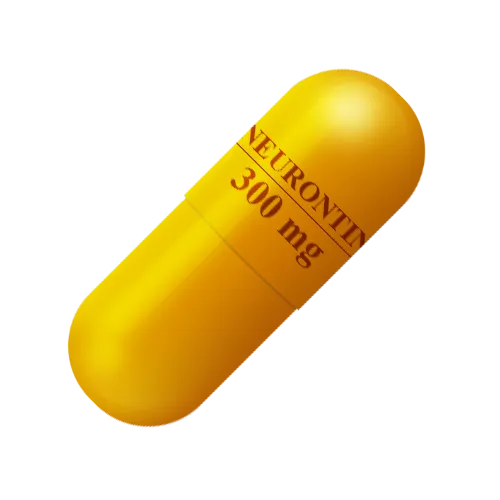Overview
Neurontin, generically known as gabapentin, is a medication primarily used to treat neuropathic pain and partial seizures in adults. It is also prescribed off-label for conditions like migraine prevention, restless legs syndrome, and certain anxiety disorders. By modulating nerve signaling, Neurontin reduces pain and seizure activity. It is available in capsules, tablets, and oral solutions for flexible administration.
History of Development and Approval
Developed by Parke-Davis (a Pfizer subsidiary), Neurontin received FDA approval in 1993 for epilepsy and in 2002 for postherpetic neuralgia (PHN). Its proven efficacy and safety profile have made it a cornerstone for neuropathic pain and seizure management.
Key Benefits
- Neuropathic Pain Relief: Significantly reduces nerve-related pain, enhancing quality of life.
- Seizure Management: Decreases frequency and severity of partial seizures.
- Versatile Applications: Effective for off-label uses like migraines and restless legs syndrome.
- Multiple Forms: Capsules, tablets, and oral solutions suit diverse patient needs.
Unique Properties
Neurontin binds to the alpha-2-delta subunit of voltage-gated calcium channels, reducing neurotransmitter release to alleviate pain and prevent seizures. Its minimal drug interactions make it suitable for patients on multiple medications.
Comparison with Similar Medications
Compared to other anticonvulsants and pain medications, Neurontin offers:
- Low Interaction Profile: Minimal impact on other drugs, ideal for polypharmacy.
- High Tolerability: Fewer severe side effects than alternatives like carbamazepine.
- Broad Efficacy: Effective across neuropathic pain and various neurological conditions.
Safety and Tolerability
Neurontin is generally well-tolerated, with common side effects including dizziness, fatigue, and peripheral edema. Rare serious effects, such as severe allergic reactions or mood changes, require prompt attention. Regular monitoring, especially during dose adjustments, ensures safety.
Indications for Use
Neurontin is indicated for:
- Neuropathic Pain: Postherpetic neuralgia and other nerve pain conditions.
- Partial Seizures: Adjunct therapy in adults and children (3+ years).
- Off-Label Uses: Migraine prevention, restless legs syndrome, anxiety disorders.
Dosage and Administration
Adults: Neuropathic pain: 300–600 mg three times daily, max 3600 mg/day. Seizures: 900–3600 mg/day in three doses.
Children (3–12 years): 10–15 mg/kg/day, titrated per provider guidance.
Elderly: Start lower, adjust for renal function.
Timing: With/without food, consistent schedule.
Notes: Gradual titration reduces side effects; adjust in renal impairment.
Mechanism of Action
Gabapentin binds to the alpha-2-delta subunit of calcium channels, reducing excitatory neurotransmitter release, thereby alleviating neuropathic pain and stabilizing neural activity to prevent seizures.
Composition
Active Ingredient: Gabapentin, drives pain and seizure relief.
Inactive Ingredients: Capsules/tablets: lactose, starch; solution: xylitol for stability.
Side Effects
Common: Dizziness, fatigue, peripheral edema, drowsiness.
Rare: Weight gain, coordination issues.
Serious: Severe allergic reactions, mood changes, suicidal thoughts require urgent care.
Prevention of Side Effects
Start with low doses, titrate slowly, monitor for mood changes or edema. Use reminders for adherence; report serious symptoms promptly.
Contraindications
Avoid in hypersensitivity to gabapentin; caution in renal impairment.
Warnings and Precautions
Monitor for depression, suicidal thoughts, or renal function changes. Avoid abrupt discontinuation to prevent withdrawal seizures.
Drug Interactions
Minimal interactions; antacids may reduce absorption; CNS depressants (e.g., opioids) increase sedation risk. Disclose all medications.
Overdose
Symptoms: double vision, slurred speech, drowsiness. Seek emergency care immediately.
Pharmacokinetics
Absorption: Dose-dependent, peak 2–3 hours.
Distribution: Minimal protein binding, widely distributed.
Metabolism: Not significantly metabolized.
Elimination: Kidneys (unchanged); half-life 5–7 hours.
Dosage Forms
Capsules (100, 300, 400 mg), tablets (600, 800 mg), oral solution (50 mg/mL) for flexible administration.
Pregnancy and Breastfeeding
Use if benefits outweigh risks (Category C); excreted in milk, consult provider.
Storage
Store at 20°C–25°C (68°F–77°F), dry, light-protected, away from children. Dispose expired properly.
Clinical Evidence
Trials confirm Neurontin’s efficacy in reducing neuropathic pain and seizure frequency, with good tolerability and minimal interactions across indications.
Conclusion
Neurontin is a versatile, effective treatment for neuropathic pain and seizures, with broad applications and minimal drug interactions. Adhere to dosing, monitor effects, and consult providers for optimal outcomes.




